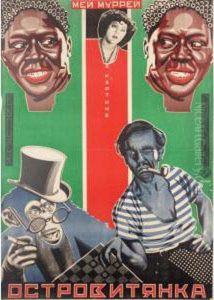Nikolai Prusakov Paintings
Nikolai Prusakov was a notable figure in the Soviet graphic arts scene, particularly recognized for his contributions to the Constructivist movement and his achievements in the realm of poster design. Born on January 7, 1900, in Moscow, Russia, Prusakov's artistic journey began in the tumultuous years of early Soviet Russia, a period that saw a radical transformation in the arts aligned with revolutionary political changes.
Prusakov's early career was marked by his involvement with the Constructivist movement, an avant-garde movement that emerged in Russia in the early 1920s. This movement was characterized by an emphasis on abstract mechanical construction and a commitment to the idea that art should have a practical, social purpose. As a student, Prusakov was greatly influenced by this movement, and it informed much of his later work, which often showcased a blend of innovative graphic design techniques with a stark, dynamic aesthetic.
Throughout the 1920s and 1930s, Prusakov developed his craft, focusing on poster art, illustration, and book design. He worked closely with other prominent artists of the time, including Alexander Rodchenko, with whom he shared a fascination with photomontage and the power of visual propaganda. Prusakov's posters from this era are notable for their bold use of color, typographic innovation, and the integration of photographic elements, which were aimed at engaging the Soviet public with the political and social goals of the time.
During World War II, Prusakov's work took on a new level of significance as he turned his talents to the creation of political propaganda posters, contributing to the Soviet war effort by crafting powerful images designed to boost morale and patriotism. His posters from this period are among his most famous, characterized by their emotional intensity and their effective use of symbolism to convey messages of resilience and defiance.
After the war, Prusakov continued to work as a graphic artist, although the post-war period saw a shift in Soviet art towards more traditional and conservative styles, under the directives of Socialist Realism. Despite these changes, Prusakov managed to maintain a degree of individuality in his work until his death in Moscow on August 19, 1952.
Nikolai Prusakov's legacy is that of a pioneering graphic artist whose work exemplified the innovative spirit of early Soviet art. His posters, in particular, remain a testament to the power of visual communication and its role in shaping public consciousness and national identity during a transformative period in Russian history.

![[circus Pommera.] Circa 1928.](https://www.niceartgallery.com/imgs/915572/s/nikolai-prusakov-circus-pommera-circa-1928-23848c8d.jpg)